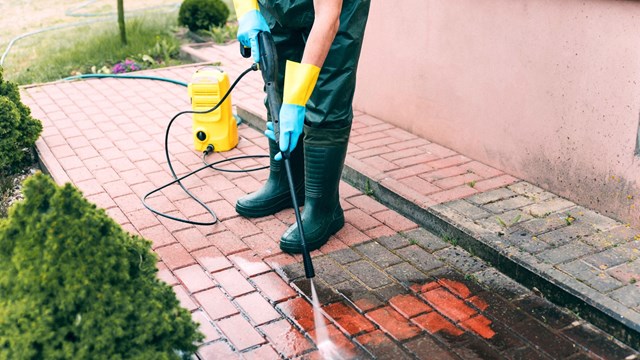
Noise is a key quality-of-life problem for almost anyone living in a densely-packed urban environment. It's the bane of many a condo-dweller’s existence, and over the years engineers, architects, and designers have tried any number of ways to reduce the problem of noise in multifamily buildings—some more successfully than others.
When Noise Annoys
As long as people have ears and the ability to use them and live in close quarters with others, there will be problems with noise. It’s just human nature.
Jeremy Feigen, owner of Accurate Construction in Mundelein has heard all the complaints. “I'd want to say the biggest issue that we're seeing in the years we've been doing this, and focusing mostly in Chicago, is construction issues. By the time [our clients] contact us it's: 'I hate my neighbors. I know when they wake up. I know when their kids go to bed. I know everything that they do. I hear every time their cell phone rings. I know when they're walking in to the bathroom in the middle of the night because there's that one squeak right in front of the floor',” he says. He even had one client who swore she could hear her downstairs neighbor's cell phone vibrate through her floor.
While a great majority of sound irritations come from the inside (kids running upstairs, loud music or TV), some residents may find that the noise originates from outside. Michael Ibarra, owner at Soundproof Chicago in Crestwood says that many of his clients cite noise caused by busy roadways, trains, flight paths, bars or nightclubs, factories and sirens. But whether inside or outside, having to constantly deal with sound issues can a lot of unnecessary stress and disrupt the home environment.
Mandy Kachur, a principal consultant with Soundscape Engineering in Ann Arbor, Michigan, and the vice president of public relations for the Institute of Noise Control Engineering/USA says, “Sounds that are transient, that come and go, that start and stop”—like hammering a nail into a wall—“or tonal noises, like whistles, tend to be more annoying than a steady broadband of white noise”—like the hum of a washer and dryer.
What distinguishes sound from noise, however, is the ear of the beholder. “Complaints arise from the noise that someone else is making,” says Kachur. “It doesn’t matter how much noise you make.”
Noise is Subjective
Unfortunately, because the concept of noise is so subjective, it is has been difficult to establish some type of regulations and building codes for it. The Chicago Department of Environment's Article XXI on Environmental Noise and Vibration control states that “between 8:00 P.M. and 8:00 A.M., no person shall generate any noise on any private open space that is louder than average conversational level at a distance of 100 feet or more, measured from the property line of the property from which the noise is being generated.”
But, herein lies the rub: what the “average conversational level” is differs for everyone.
“I could be somebody that talks very loud and thinks that the way I talk is fine. My neighbors could have a completely different feel on that. So, there really isn't a set of specific standards that I have been able to find at all with really any municipality saying that you need to meet a certain decibel level,” says Feigen. “There are areas and cut guidelines for fire control, for example, of exactly what needs to be obtained with that. That's very specific. But when you get into the sound control, it's not as specific. It's normal listening levels, which as you know varies from person to person.”
Ibarra adds, “Some people are more sensitive to certain noises than others. If several people in a building are complaining about the same noise, whether it be environmental or structural, there is an obvious noise problem. A soundproofing expert may be called on to evaluate certain factors such as the intensity of the noise, the construction of the building, and determine if any upgrades need to be done to address the noise problem.”
Sound, By the Numbers
There are three grades, per HUD, given buildings as it pertains to noise. Grade 1 is luxury; grade 3 is the aural equivalent of living in a cardboard box on Lake Shore Drive; grade 2 is everything else.
STC, or sound transmission class, pertains to what’s called airborne sound—voices, music, dog barks, your neighbor’s kid practicing her violin, and so forth.
The American Society for Testing and Materials (ASTM) has developed a ratings system that assigns an STC number to building materials corresponding to how effectively it diminishes the transfer of noise. This number derives from a mathematical formula involving sound attenuation values and transmission loss curves and other technical data. A low number indicates sound flowing easily through the wall—a rating of 25, for example, means you can hear conversations as if the wall didn’t even exist. Forty is the baseline number, the minimum rating for what acoustical engineers call “privacy.” Anything above 60 and, as they say in horror movies, you’ll never hear them scream.
“The luxury grade has higher acoustical ratings than average grade,” says David Ingersoll, national sales manager for Acoustical Solutions in Richmond, Virginia.
These ratings are used not only to test the quality of sound from room to room, but also to determine where a residence may be built in the first place. Builders, for example, cannot construct a condominium too close to O’Hare Airport, for example, because of HUD restrictions on STC.
The other sound measure is IIC, or impact insulation class, which measures “impact” sounds, such as the clack-clack-clack of the stiletto heels worn by your upstairs neighbor as she walks around her ceramic-floored kitchen at 5 a.m.
“The biggest challenge now is IIC numbers,” Ingersoll says. “Years ago, it wasn’t an issue, because people used an awful lot of wall-to-wall carpeting. Now, they want hardwood floors, they want ceramic tile,” and those materials don’t naturally dampen noise. “Because there’s no longer a cushion above the floor, it must now be under it.”
The solution is to have a layer of one of many materials—recycled rubber or recycled wood are two common choices—beneath the floorboards.
Soundproofing
You know the old saying about walls being “paper-thin?” As it turns out, thin walls do allow the most noise to pass through. The first rule of quality soundproofing, then, is thicker walls.
But as many industry pros will say, to completely soundproof a room would cost thousands of dollars and it would probably be more economical to move. The strategies used today can help reduce noise, some more successfully than others. “Typically, I tell people we can address about 80% of the issue because to tell somebody realistically you can do more than that, it isn't very feasible,” says Feigen.
For those living in condo units, there are several options used to address noise issues. Ibarra says that windows should be addressed first since they are the weakest part of a house's walls. He suggests CitiQuiet, a New York company which makes soundproof windows. Their windows, he says, are “made specifically with laminated glass, and air-tight aluminum frames. This window is installed as an interior storm window and is effective at blocking up to 90% of street noise. They are in use in many new construction settings as well as existing buildings, and even currently installed at the U.S. Supreme Court.”
Another effective product is called Green Glue which is “a liquid damping compound that is applied to standard sheets of drywall,” says Ibarra. “Green glue is effective at blocking airborne noise that travels through walls and ceilings. It has been gaining popularity in new construction to soundproof walls and ceilings and has been used for over ten years in retrofit applications.”
Feigen adds, “it's like getting a rubber barrier in between the two layers of drywall. So, sound that's down below will kind of stop at the middle and bounce back to you and sounds from outside will help stay out.”
A type of cellulose insulation called blown-in insulation can help diminish noise that is occurring from floor to ceiling. Feigen explains that it is made of recycled newspaper, making it a green product, and contractors create a small hole in the wall and use a vacuum to blow it into the ceiling joists.
Cork, the old standby used famously by the novelist Marcel Proust in his Paris apartment, is still effective at blocking sound—mostly impact sound. Because it is renewable, it has its apologists among green builders as an under-layer in flooring. But cork breaks down fairly quickly.
Serious Energy, a Sunnyvale, CA soundproofing and energy management company, makes a form of damped drywall called QuietRock. A technique called constrained air damping is used to dull vibrations—in effect blanketing soundwaves. “It’s like a shock absorber,” Kachur explains. These materials are specifically engineered to dull the sound in the frequencies of human speech, she says.There are two problems with soundproofing. The first is price. “It’s very expensive,” Kachur says. “If you build a five-story condo—that might be prohibitively expensive. But to soundproof the downstairs video room? That’s probably worth it.”
The second problem is—it’s an arduous job to soundproof a condo that someone lives in. The place has to be gutted, with new layers added to the floor, ceiling, and walls.
“The hardest part is, once people are in, it’s almost too late,” says Ingersoll. “They need to be built through beforehand.”
So if you’re planning on buying a condo or an apartment, you’d better be sure and know how it sounds at Saturday night, or early in the morning. If it’s too noisy, once you move in, you’ll never hear the end of it.
Greg Olear is a freelance writer and a frequent contributor to The Chicagoland Cooperator.






Comments
Leave a Comment